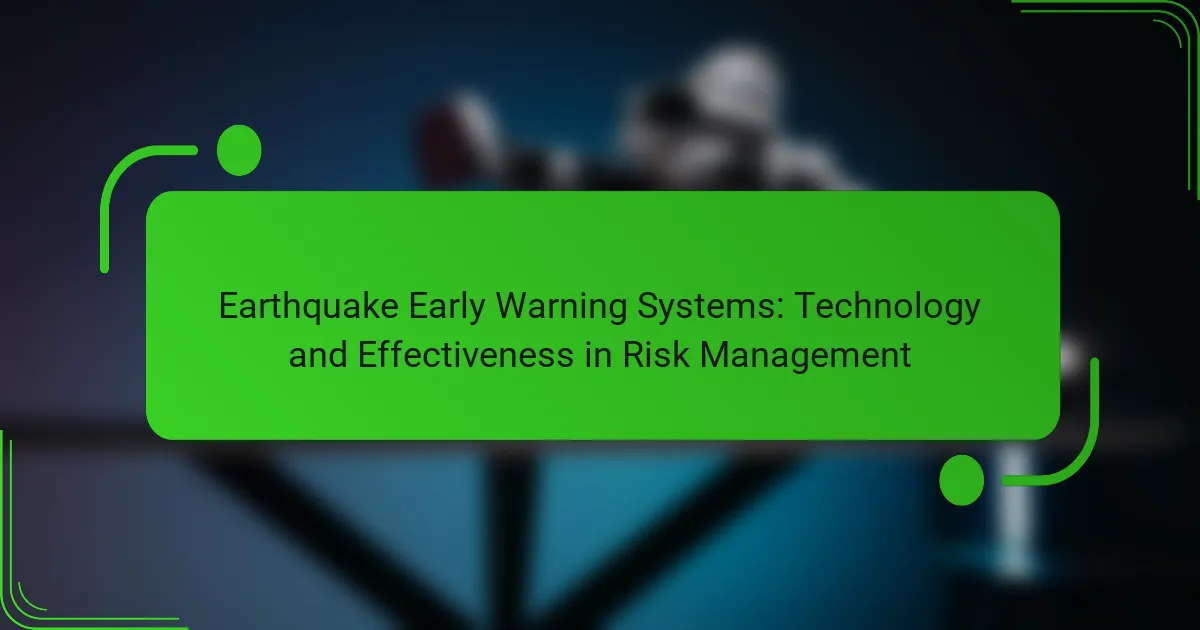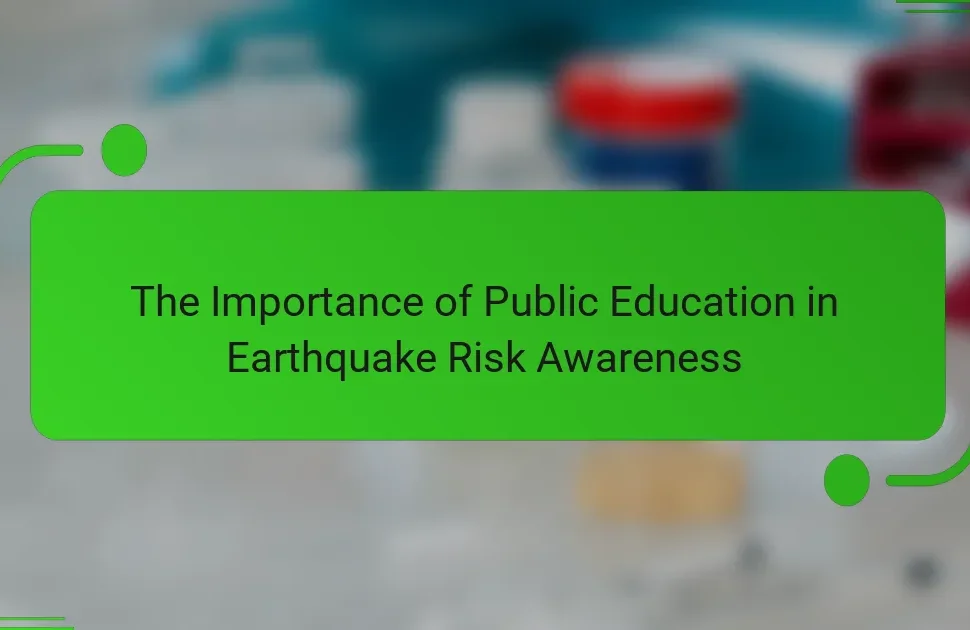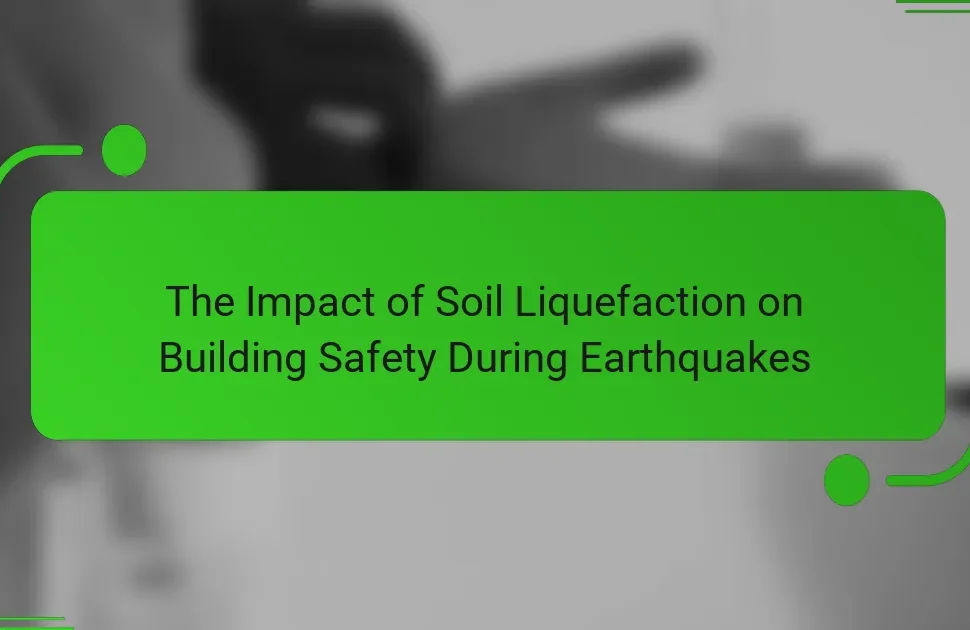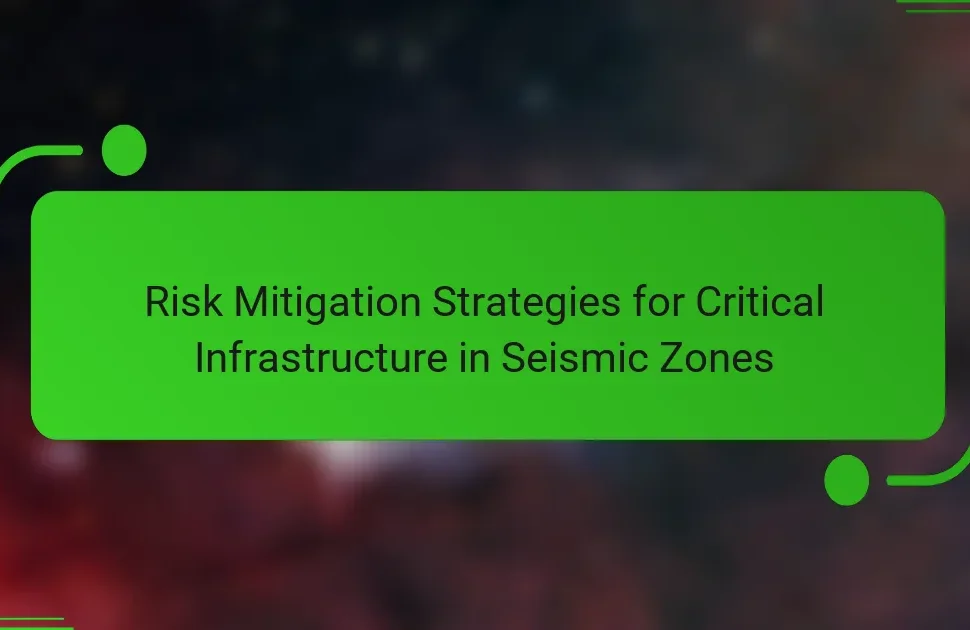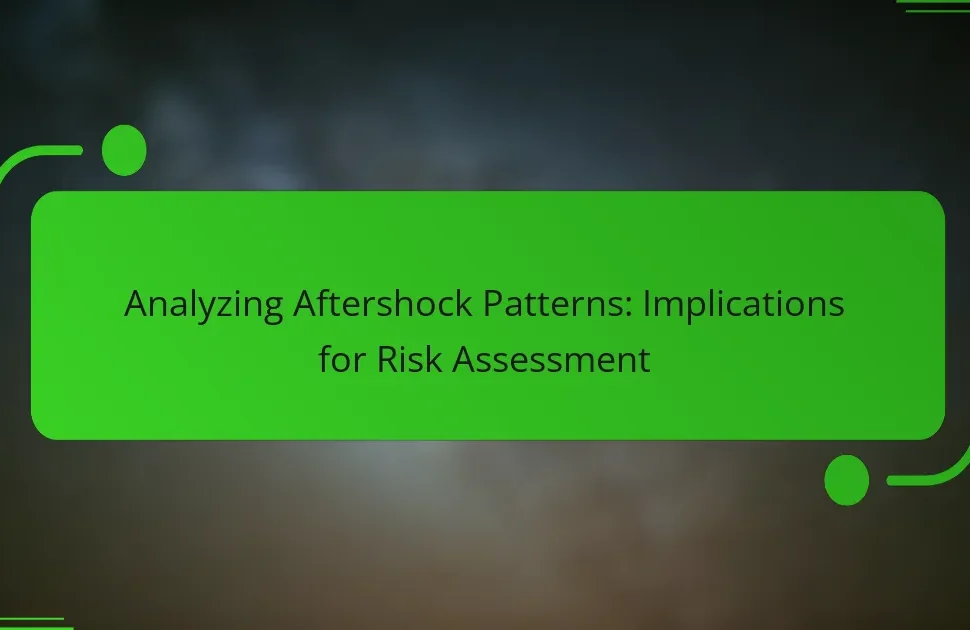Earthquake Early Warning Systems (EEWS) are advanced technologies that detect seismic activity and provide timely alerts to mitigate risks associated with earthquakes. These systems rely on a network of seismic sensors to monitor ground movements and analyze data to determine the earthquake’s magnitude and location. Upon detection, alerts are dispatched to individuals and infrastructure at risk, enabling critical protective measures. Research indicates that EEWS can offer warning times ranging from seconds to minutes, significantly reducing potential injuries and damage. The effectiveness of systems like ShakeAlert in California highlights the practical benefits of implementing EEWS in risk management strategies.
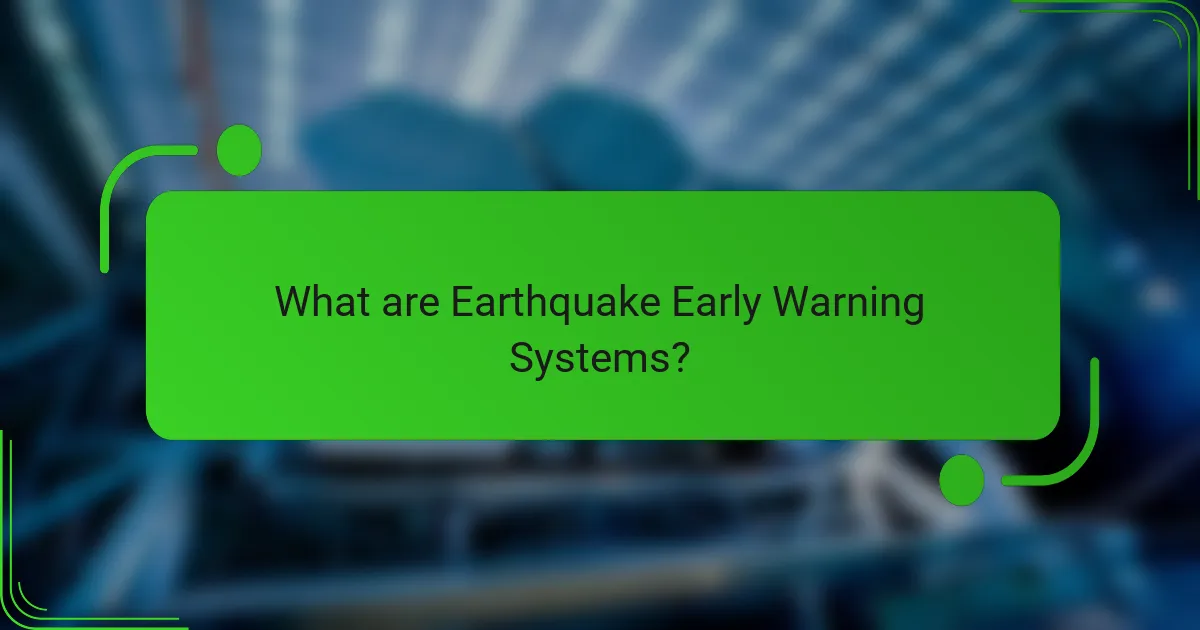
What are Earthquake Early Warning Systems?
Earthquake Early Warning Systems (EEWS) are technologies designed to detect seismic activity and provide alerts before the shaking reaches a location. These systems utilize a network of seismic sensors to monitor ground movements. When an earthquake occurs, the sensors quickly analyze the data to determine the event’s magnitude and location. Alerts are then sent to people and infrastructure at risk, allowing for protective actions. Research shows that EEWS can provide seconds to minutes of warning, which can significantly reduce injuries and damage. For example, the ShakeAlert system in California has demonstrated effectiveness during real events.
How do Earthquake Early Warning Systems function?
Earthquake Early Warning Systems function by detecting seismic waves and providing alerts before the shaking reaches populated areas. These systems utilize a network of sensors to identify the initial, less-damaging seismic waves, known as P-waves. Once detected, the system calculates the expected arrival time of the more damaging waves, called S-waves. Alerts can be sent to individuals and infrastructure seconds to minutes before the shaking starts.
For example, the ShakeAlert system in California can provide warnings of up to 60 seconds, depending on the distance from the epicenter. This technology has been shown to reduce injuries and property damage during earthquakes by allowing people to take protective actions. Studies indicate that timely warnings can improve response times and preparedness, enhancing overall safety.
What technologies are used in Earthquake Early Warning Systems?
Earthquake Early Warning Systems (EEWS) utilize several key technologies. These include seismic sensors that detect ground motion. These sensors are deployed in various locations to monitor seismic activity. Data from these sensors is transmitted to a central processing unit. The processing unit analyzes the data in real-time. Algorithms assess the likelihood of an earthquake and its potential impact. Communication systems then disseminate alerts to the public and infrastructure. This technology allows for seconds to minutes of warning before shaking begins. Research shows that timely alerts can significantly reduce injuries and damage.
How do sensors and algorithms contribute to the effectiveness of these systems?
Sensors detect seismic activity in real-time, providing critical data for earthquake early warning systems. These sensors measure ground motion, allowing for the identification of tremors before they become damaging. Algorithms analyze the sensor data to assess the magnitude and location of an earthquake. This analysis enables rapid decision-making regarding alerts and responses. A study by the US Geological Survey indicates that timely alerts can reduce injury and property damage by up to 50%. The combination of accurate sensor data and advanced algorithms enhances the overall effectiveness of these systems in mitigating risks associated with earthquakes.
What are the key benefits of Earthquake Early Warning Systems?
Earthquake Early Warning Systems provide timely alerts that enhance public safety. These systems can detect seismic activity and deliver warnings seconds to minutes before shaking occurs. This advance notice allows individuals to take protective actions, such as dropping to the ground or moving to safer areas.
Research indicates that early warnings can reduce injuries and fatalities during earthquakes. For instance, studies show that systems like ShakeAlert have successfully provided alerts in California, allowing for immediate response. Additionally, these systems can help mitigate economic impacts by allowing businesses to prepare and secure assets before damage occurs.
Overall, the key benefits include increased public safety, reduced injury rates, and minimized economic losses.
How do these systems enhance public safety during seismic events?
Earthquake early warning systems enhance public safety during seismic events by providing timely alerts before shaking occurs. These systems detect initial seismic waves and analyze data to predict the arrival of more damaging waves. Alerts can be sent to individuals and organizations seconds to minutes before the shaking starts. This early warning allows people to take protective actions, such as dropping to the ground or moving to safer locations. It also enables automatic responses, such as shutting down gas lines and halting trains. Research indicates that timely alerts can significantly reduce injuries and fatalities. For example, the 2011 Tōhoku earthquake in Japan demonstrated the effectiveness of these systems in minimizing damage. Overall, these systems are crucial for improving preparedness and response during seismic events.
What economic advantages do Earthquake Early Warning Systems provide?
Earthquake Early Warning Systems (EEWS) provide significant economic advantages by minimizing damage and reducing recovery costs. These systems alert individuals and organizations seconds before shaking begins. This early warning allows for timely protective actions, such as stopping trains and shutting down gas lines. Research indicates that EEWS can save billions in damages. For instance, the 2011 Japan earthquake’s EEWS helped reduce economic losses by an estimated $1 billion. Additionally, these systems enhance public safety, reducing the economic burden of injuries and fatalities. Overall, EEWS contribute to a more resilient economy in earthquake-prone regions.
What challenges do Earthquake Early Warning Systems face?
Earthquake Early Warning Systems face several significant challenges. One challenge is the need for rapid data processing. These systems must analyze seismic data in real-time to provide timely alerts. Another challenge is the accuracy of detection. False alarms can lead to public distrust and confusion. Additionally, the systems require extensive sensor networks. These networks must be strategically placed to ensure comprehensive coverage. Integration with existing infrastructure is also problematic. Many regions lack the necessary technology or resources to implement these systems effectively. Finally, public awareness and preparedness are crucial. Without proper education, the effectiveness of alerts can diminish.
How do false alarms impact public perception and trust?
False alarms significantly erode public perception and trust in earthquake early warning systems. When people receive alerts that turn out to be false, their confidence in the system diminishes. Studies indicate that repeated false alarms can lead to desensitization, causing individuals to ignore future alerts. For instance, a 2018 study published in the journal “Natural Hazards” found that communities experiencing frequent false alarms reported decreased trust in warning systems. Trust is crucial for effective risk management, as it influences public response during actual emergencies. Therefore, maintaining accuracy in alerts is essential for fostering public confidence and ensuring safety.
What technological limitations currently exist in Earthquake Early Warning Systems?
Earthquake Early Warning Systems face several technological limitations. One major limitation is the latency in data processing. Current systems may take seconds to analyze seismic data before issuing alerts. This delay can reduce the effectiveness of warnings, especially for nearby earthquakes. Another limitation is the reliance on a network of sensors. If sensors are damaged or malfunctioning, the system’s accuracy is compromised. Additionally, the geographical coverage of these systems is often limited. Many regions lack sufficient sensor density to provide reliable early warnings. False alarms also pose a challenge, as they can lead to public desensitization. Finally, the integration of these systems with public alert mechanisms can be inconsistent, hindering timely communication.
How are Earthquake Early Warning Systems integrated into risk management strategies?
Earthquake Early Warning Systems (EEWS) are integrated into risk management strategies by providing timely alerts to mitigate damage and enhance safety. These systems detect seismic activity and send warnings before the shaking reaches populated areas. The integration involves collaboration between government agencies, emergency services, and technological platforms.
EEWS data informs public safety protocols, allowing for immediate actions such as evacuations or halting critical operations. Studies show that timely alerts can reduce injuries and economic losses. For instance, the Japan Meteorological Agency’s EEWS has proven effective in minimizing impacts from earthquakes.
By incorporating real-time data into emergency response plans, communities can better prepare for seismic events. This proactive approach enhances resilience and promotes public awareness of earthquake risks.
What role do these systems play in emergency response planning?
Earthquake Early Warning Systems play a critical role in emergency response planning. They provide real-time alerts to individuals and organizations before seismic waves arrive. This early notification allows for timely protective actions, such as evacuating buildings or stopping trains. Research indicates that these systems can reduce injuries and fatalities during earthquakes by giving people crucial seconds to respond. For instance, the ShakeAlert system in California has demonstrated effectiveness in providing alerts seconds before shaking occurs. This capability enhances situational awareness for emergency responders and the public. Ultimately, these systems improve overall preparedness and resilience against seismic events.
How do Earthquake Early Warning Systems inform building codes and urban planning?
Earthquake Early Warning Systems (EEWS) inform building codes and urban planning by providing critical data on seismic activity. These systems detect earthquakes and provide alerts seconds before shaking occurs. This advance notice allows for the implementation of safety measures. Urban planners can use this information to design structures that withstand seismic forces. Building codes can be updated to include stricter standards based on earthquake risk assessments. Studies show that regions with EEWS have implemented more resilient infrastructure. For example, California has revised its building codes after integrating EEWS data. This proactive approach minimizes damage and enhances public safety during seismic events.
What advancements are being made in Earthquake Early Warning Systems?
Advancements in Earthquake Early Warning Systems include improved sensor technology and data analytics. Enhanced sensors can detect seismic activity more accurately and quickly. These sensors are being deployed in greater numbers across regions prone to earthquakes. Machine learning algorithms are being utilized to analyze data in real-time. This allows for faster processing and more precise predictions of seismic events. Integration with mobile technology enables alerts to be sent instantly to users. Recent studies show that these advancements can significantly reduce injury and damage. For example, the ShakeAlert system in California has demonstrated effectiveness in providing timely warnings.
How is machine learning improving the accuracy of these systems?
Machine learning is enhancing the accuracy of earthquake early warning systems by analyzing large datasets for patterns. These systems utilize algorithms to process seismic data in real-time. Machine learning models can identify precursors to earthquakes that traditional methods might miss. By continuously learning from new data, these models improve their predictive capabilities over time. Research shows that machine learning can reduce false alarms by up to 30%. This increase in accuracy leads to more reliable alerts for communities at risk. Implementing machine learning also allows for quicker response times during seismic events. Overall, machine learning significantly boosts the effectiveness of earthquake early warning systems.
What future technologies are being explored for enhanced earthquake detection?
Future technologies being explored for enhanced earthquake detection include advanced machine learning algorithms. These algorithms analyze seismic data in real-time to identify patterns indicative of impending earthquakes. Additionally, the use of satellite technology is being investigated. Satellites can detect ground deformation that occurs before seismic events.
Another promising area is the deployment of dense sensor networks. These networks provide high-resolution data, improving early warning capabilities. Researchers are also exploring the integration of artificial intelligence with traditional seismic monitoring systems. This integration aims to enhance predictive accuracy and reduce false alarms.
Furthermore, the development of mobile applications for public alerts is in progress. These applications can deliver real-time warnings based on localized seismic activity. Ongoing research focuses on improving data sharing among global monitoring systems. This collaboration can lead to more effective earthquake prediction and response strategies.
What best practices should be followed for implementing Earthquake Early Warning Systems?
Implementing Earthquake Early Warning Systems (EEWS) requires several best practices. First, comprehensive seismic monitoring networks must be established. These networks should include a dense array of seismic sensors. This setup allows for rapid detection of seismic activity. Second, robust data processing algorithms are essential. They should analyze seismic data in real-time to provide timely alerts. Third, effective communication systems must be in place. These systems should disseminate alerts to the public and critical infrastructure quickly. Fourth, public education and training are crucial. Communities should understand the meaning of alerts and how to respond. Fifth, regular system testing and maintenance are necessary. This ensures the reliability and accuracy of the EEWS. Lastly, collaboration with local governments and stakeholders enhances system effectiveness. These practices help minimize the impact of earthquakes on communities.
Earthquake Early Warning Systems (EEWS) are advanced technologies designed to detect seismic activity and provide alerts before shaking occurs, enhancing public safety and minimizing damage. The article explores the functionality of EEWS, including the role of seismic sensors and algorithms in delivering timely warnings. It highlights the key benefits of these systems, such as reduced injuries and economic losses, while also addressing challenges like false alarms and technological limitations. Furthermore, the article examines advancements in EEWS, including machine learning and future technologies, as well as best practices for effective implementation in risk management strategies.
